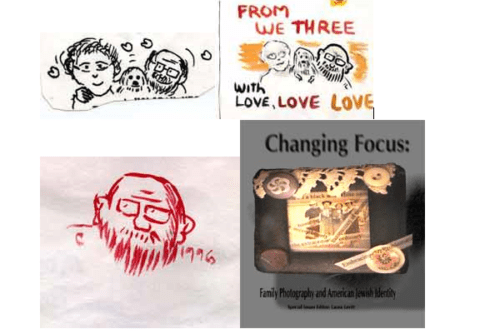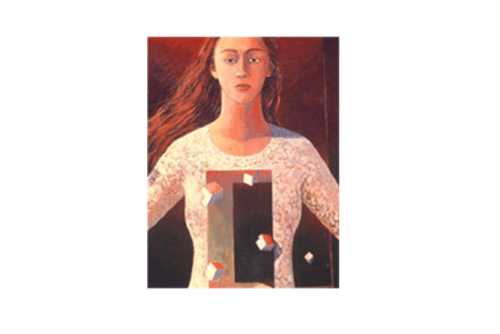The New Woman and New Views of Empire in Interwar France
The rise of the New Woman as a social and cultural trope in interwar France was intimately linked to the gender dislocations caused by the First World War. Most significantly, the war produced a tremendous gender imbalance by killing over 1 million Frenchmen and disabling many more. 1 People spoke of the “man shortage” after the war, and cultural commentators poured forth reams of advice for young woman on the best ways to secure a husband in such a competitive market. 2 At the same time, the war had spurred the entry of young women into jobs previously reserved for men. Although the nation quickly dispensed with the female subway car conductors and steelworkers after the Armistice, it soon became acceptable for young, unmarried, middle-class women to work as clerks, typists, and salesgirls, and even to live away from their parents’ homes. 3 Finally, the idea of the New Woman also became a fashion statement. Wartime shortages of cloth and the dangers of working in factories surrounded by heavy machinery discouraged the kind of voluminous dresses that dominated prewar women’s fashions. In the early 1920s, designer Coco Chanel pioneered the new look in women’s clothing: short skirts, collars, short hair, and a minimalist waist and bust. Imitating both masculine fashion and Cubist mechanical aesthetics, this new fashion look became the sine qua non of the modern young Parisienne. 4
Thus was born la garçonne, the bachelor girl, whose outer appearance supposedly mirrored a new social and sexual daring and independence. According to popular stereotypes, the woman who cut her hair short also worked outside the home and earned her own money, which she often used to support an extravagant, dissolute lifestyle that included drink, drugs, jazz, and sexual experimentation. 5 She represented the refusal of youth in general to return to prewar social norms, and the widespread desire to enjoy life to the fullest while one still could. The bachelor girl also represented a blurring of gender roles that graphically illustrated the war’s destruction of tradition and the cultural anxieties of the 1920s. Both the greater freedom and the greater uncertainties of the interwar years became encapsulated in the bachelor girl, the ultimate symbol of the modern age.
Yet the specter of the New Woman was more a cultural fear than a social reality. While fashions certainly changed after the war, most young middle-class Frenchwomen continued to live lives rigidly circumscribed by propriety and tradition. Simone de Beauvoir, who grew up in Paris during the 1920s, tellingly titled her autobiography Memoirs of a Dutiful Daughter. 6 The garçonne may not have existed in large numbers, but she provoked a great deal of worried commentary from social and political authorities in France. As one Parisian law student wrote in 1925, “These beings—without breasts, without hips, without ‘underwear,’ who smoke, work, argue and fight exactly like boys, and who, during the night at the Bois de Boulogne, with their heads swimming under several cocktails, seek out savory and acrobatic pleasures on the plush seats of 5 horsepower Citröens—these aren’t young girls! There aren’t any more young girls!” (cited in Roberts, 20). 7 Many in France felt that the victory in the war should be complemented by a renewed emphasis on domesticity and traditional gender roles; as a consequence, France became one of the very few Western nations to deny women the vote after 1918.
In 1922, Victor Margueritte published his novel La garçonne, which chronicled the life and adventures of its heroine, Monique Lerbier. 8 In the novel Lerbier rejects her bourgeois provincial family and flees to Paris to lead a dissolute life that includes drug and alcohol abuse, sex with both men and women, and dancing the night away in jazz clubs. The archbishop of Paris denounced the novel, which was formally banned by the French government. This, of course, made it more popular than ever; the novel sold over 1 million copies by the end of the 1920s. If the novel shocked and titillated Parisians, the exploits of a real live bachelor girl ten years later horrified them. In 1931 a Parisian teenager named Violette Nozières poisoned her parents, having been abused by her father. She then stole 1,500 francs from them and fled to Montmartre, where she spent a week hanging out in the clubs and living with a variety of men. When apprehended, she demonstrated absolutely no remorse, claimed her right to live her own life, and was nearly lynched by a mob on her way to court. 9 Both Lerbier and Nozières represented the garçonne as decadent and ultimately a danger to society and the family.
- Major works on World War I in France include Leonard V. Smith, Stéphane Audoin-Rouzeau, and Annette Becker, France and the Great War 1914-1918 (Cambridge and New York: Cambridge University Press, 2003); Jean-Jacques Becker, Les français dans la grande guerre (Paris: Robert Laffont, 1980).[↑]
- Edward Montier, L’idéale fiancée (Paris: Èditions marriage et famille, 1932); Elisa Camiscioli, “Producing Citizens, Reproducing the ‘French Race’: Immigration, Demography, and Pro-Natalism in Early Twentieth-Century France,” Gender and History 13, no. 3 (2001); Mary Lynn Stewart, For Health and Beauty: Physical Culture for French Women, 1880s-1930s (Baltimore: Johns Hopkins University Press, 2001).[↑]
- On the idea of the New Woman in France, see Mary Louise Roberts, Civilization Without Sexes: Reconstructing Gender in Postwar France, 1917-1927 (Chicago: University of Chicago Press, 1994); Dominique Desanti, La femme au temps des années folles (Paris: Stock, 1985); James McMillan, Housewife or Harlot: The Position of Women in French Society, 1870-1940 (New York: St Martins Press, 1980); Laura Downs, Manufacturing Inequality: Gender Division in the French and British Metalworking Industries, 1914-1939 (Ithaca: Cornell University Press, 1995); Whitney Chadwick and Tirza True Latimer, eds. The Modern Woman Revisited: Paris Between the Wars (New Brunswick: Rutgers University Press, 2003).[↑]
- Mary Louise Roberts, “Samson and Delilah Revisited: The Politics of Fashion in 1920s Paris,” in Chadwick and Latimer, op. cit.[↑]
- Anne Marie Sohn, “La Garconne face à l’opinion publique: Type littéraire ou type social des années 20?” Mouvement Social 80 (1972).[↑]
- Simone de Beauvoir, Memoirs of a Dutiful Daughter (Cleveland: World Publishing Co., 1959).[↑]
- M. Numa Sadoul, “Une Controverse: L’Emancipation de la jeune fille moderne est-elle un progrès reel?” Progrès civique (June 13, 1925), cited in Roberts, Civilization, p. 20.[↑]
- Victor Margueritte, La Garçonne, roman (Paris: E. Flammarion, 1922).[↑]
- Janet Flanner, Paris Was Yesterday, 1925-1939 (New York: Penguin Books, 1979).[↑]



